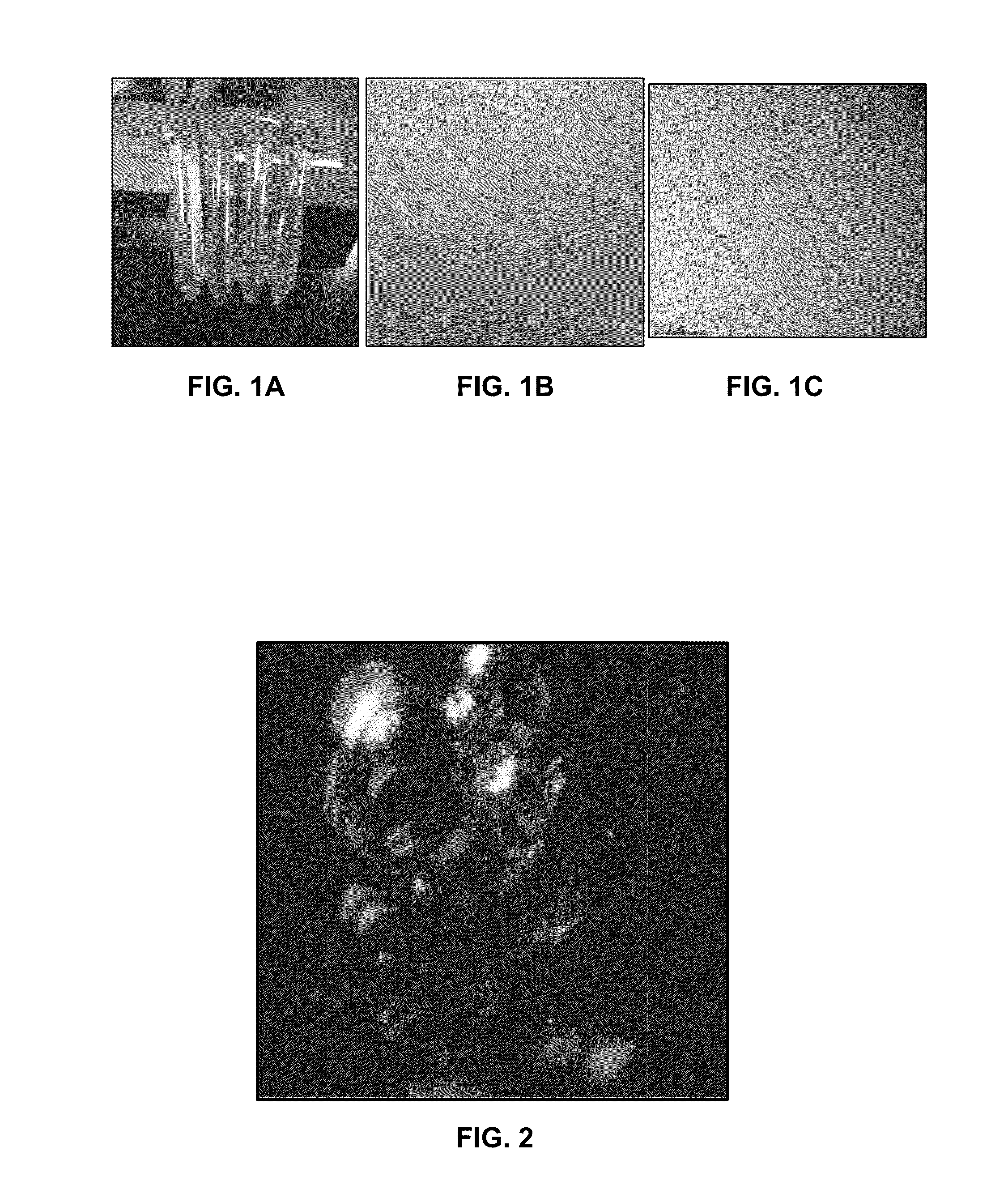Methods for synthesis of graphene derivatives and functional materials from asphaltenes
a technology of graphene derivatives and functional materials, which is applied in the direction of lithium compounds, fullerenes, alkali metal sulfites/sulfates, etc., can solve problems such as problems and difficulties, bring oil production to a halt, and large maintenance costs
- Summary
- Abstract
- Description
- Claims
- Application Information
AI Technical Summary
Benefits of technology
Problems solved by technology
Method used
Image
Examples
example 1
Asphaltene Preparation
[0266]Numerous methods of processing asphaltene sources (e.g., crude oil) are recognized in the art. The extraction of asphaltene process includes precipitation and purification. One of the extraction process employed for the production of asphaltene from crude oil is given below
[0267]Materials—Maya crude oil, Heptane (99.8% purity, Toluene (99.9% purity), glass wares, paper filters (40 microns), Nitric acid (EMD NX-0409-2), Sulfuric acid (Fischer A300-212), NaOH (Fischer. Cas No: 1310-73-2), HCl (37.5% Conc.).
[0268]Precipitation—Asphaltenes are extracted from crude oil: 100 ml of thoroughly mixed crude oil was dissolved in four liters of heptane and subjected to magnetic stirring for 48 hours at room temperature. The homogeneous mixture was filtered (40 μm filter paper) and rinsed using toluene. The product solution was collected in recrystallization dishes and kept for drying under a hood for 24 hours. About 14 g of dried impure (crude) asphaltene was collect...
example 2
Derivatization of Asphaltene (Nanobud Quantum Dot)
[0270]A mixture of 5 ml of nitric acid and 45 ml of sulfuric acid was refluxed with 200 mg of asphaltene at 60° C.±10 for 3 days, this will generate defects on the surface of asphaltene. The diluted NaOH was added and incubated at 95° C.±5 for 2 hours and quenching was completed with the addition of 0.01 M HCl at 95° C.±5 for 2 hours. This reaction yielded a yellowish, liquid gel. The purification of the mixed solution is done by filtration, centrifugation etc. The product of this synthesis is a highly water soluble class of graphene quantum dots that belongs to the lastotenes. The IR spectra of the lastotene produced from this synthesis is shown in FIG. 10. (standard).
example 3
Derivatization of Asphaltene (Nanobud Quantum Dot)
[0271]5 ml of nitric acid and 45 ml of sulfuric acid was mixed at 80° C.±10 for 3 days. 25 ml of 0.01 M NaOH was reacted with the mixture at 90° C.±5 for 2 hours and quenching was completed with the addition of 25 ml of 0.01 M HCl at 95° C.±5 for 2 hours. The final solution is referred to as a lastotene solvent. The solvent is used as a solvent for ultrasonication of asphaltene. 20 mg of asphaltenes was immersed in 50 ml of the solvent solution. Ultrasonication of the resulting mixture was carried out for 2 hours. The mixed solution is separated by filtration. The product of this synthesis belongs to the lastotenes. The IR spectra of the lastotene obtained from this synthesis is shown in FIG. 10. (RT)
PUM
| Property | Measurement | Unit |
|---|---|---|
| temperature | aaaaa | aaaaa |
| temperature | aaaaa | aaaaa |
| temperature | aaaaa | aaaaa |
Abstract
Description
Claims
Application Information
 Login to View More
Login to View More - R&D
- Intellectual Property
- Life Sciences
- Materials
- Tech Scout
- Unparalleled Data Quality
- Higher Quality Content
- 60% Fewer Hallucinations
Browse by: Latest US Patents, China's latest patents, Technical Efficacy Thesaurus, Application Domain, Technology Topic, Popular Technical Reports.
© 2025 PatSnap. All rights reserved.Legal|Privacy policy|Modern Slavery Act Transparency Statement|Sitemap|About US| Contact US: help@patsnap.com



